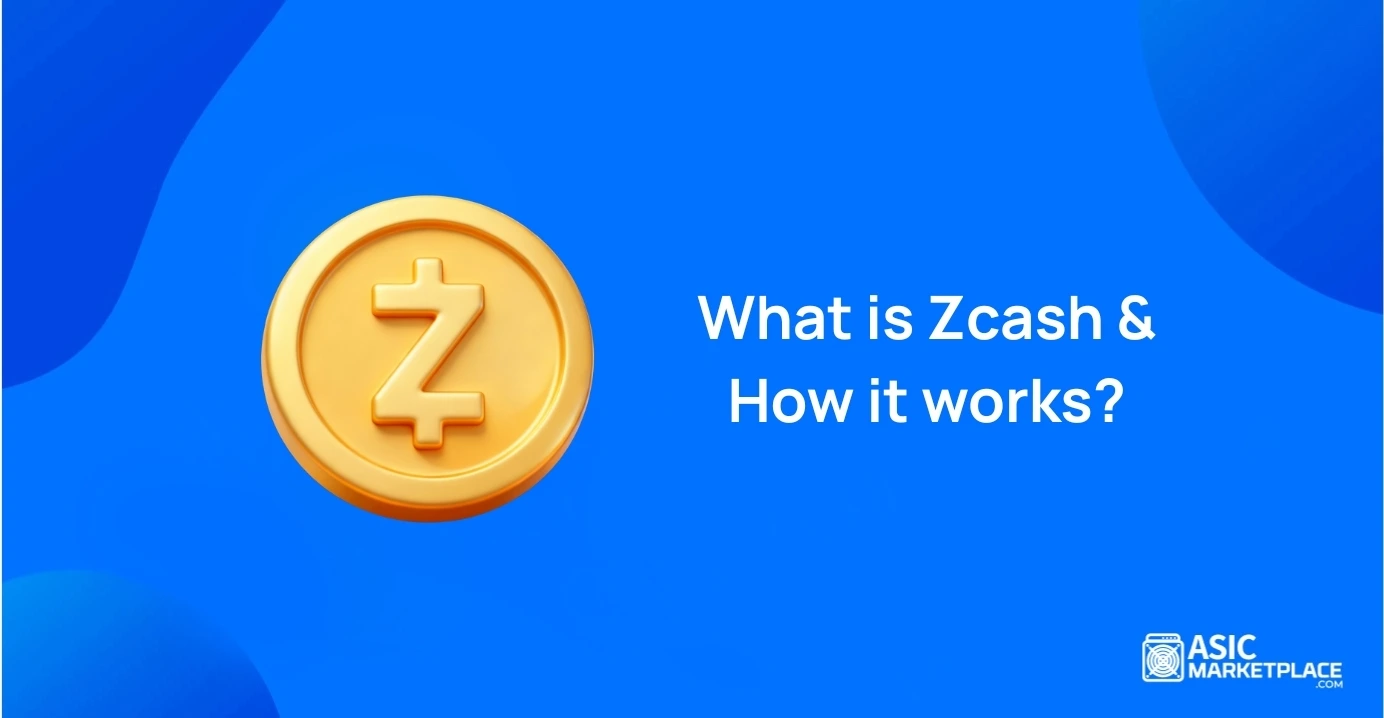Quick Summary
Cryptocurrency has become popular worldwide as a way to invest, trade, and earn money. But with this growing popularity, scams have also become more common. Every day, thousands of people lose their money to smart but dangerous fraudsters. These scammers take advantage of people who are new to crypto or not careful enough.
Crypto scams are rising because cryptocurrency is not controlled by any one government or bank. It’s hard to trace; once money is gone, it’s usually gone forever. Scammers love this, and they keep finding new ways to trick people.
In this blog, we’ll talk about the most common crypto scams. We’ll explain how they work, what red flags to watch for, and most importantly, how to avoid falling for them. The goal is to help you stay safe in the world of crypto.
Common Crypto Scams and How to Avoid Them
Crypto can change your life – but scammers know that too. From fake sites to flashy promises, they’re waiting for one careless click. Learn the tricks they use and how to stay one step ahead, so your coins stay yours.
1. Phishing Scams: Fake Emails & Websites
What Is a Phishing Scam?
Phishing is a method used by scammers to get your personal information. In crypto, phishing usually targets wallet passwords, private keys, seed phrases, or exchange login details. These scams often take the form of emails, fake websites, or even messages pretending to be from trusted companies.
Scammers try to make everything look real. The emails or messages you get may look exactly like they came from Binance, Coinbase, or MetaMask. But once you click the link and enter your information, the scammer receives full access to your account or wallet and you may lose all your funds instantly.
How Does It Work?
You get an email saying, “Your crypto wallet has been frozen. Click here to verify your identity.” The email looks legit, so you click the link. The website it opens looks exactly like your genuine wallet login page. Without thinking, you enter your credentials.
The site is fake. When you type your info, it is sent directly to the scammer. They then use it to access your wallet or account and transfer your funds. By the time you realize it, it’s too late.
Red Flags to Watch For
- Messages that urge you to act quickly.
- Misspelled email addresses or weird domain names.
- Emails that start with “Dear user” instead of your name.
- Popups on random websites asking for your wallet info.
Scammers induce a sense of urgency, which makes you behave rashly and impair your judgment. Before you click or enter, always take your time and pay great attention.
How to Avoid Phishing Scams
- Be careful when clicking on suspicious hyperlinks in messages or emails.
- Always go to the official website manually, not through links.
- Enable Two-Factor Authentication (2FA) on your crypto accounts.
- Use a secure password manager.
- Don’t give out your seed phrase or private key.
Also, check the site URL carefully before entering any sensitive information. Scammers often trick users by making slight changes in spelling (like “bínance.com” instead of “binance.com”).
The best defense against phishing is awareness. If you ever feel unsure, take a step back and verify everything. In crypto, one wrong click can cost you everything. Stay alert and trust only verified sources.
2. Ponzi & Pyramid Schemes
What Are Ponzi and Pyramid Schemes?
Ponzi and pyramid schemes are fake investment programs that promise high profits in a short time. They don’t make money through real trading or business. Instead, they use the money from new people to pay old investors. It may look like everyone is earning, but the whole system is a lie. Eventually, it crashes, and most people lose everything.
In a Ponzi scheme, only one person or group controls the money. They collect funds and show fake returns to attract more investors. In a pyramid scheme, participants earn money by bringing in more people. Each new level funds the level above it.
How Do They Work?
Let’s say you are invited to invest $500 and promise to get $1000 back in a month. It sounds excellent, and at first, it might work. You received the promised money, but it didn’t come from profits; it came from someone else who joined after you.
These schemes grow fast because people start telling their friends and family. Soon, hundreds or thousands of people invest. But the new money stops coming in at some point. That’s when the whole thing collapses. The scammer disappears, and most people lose their funds.
Warning Signs to Watch For
- Guaranteed high returns with no risk.
- Pressure to “invest quickly before the offer ends.”
- Promises of passive income for inviting others.
- No clear explanation of how the money is made.
- Flashy lifestyle photos to create fake success stories.
It probably is if something sounds too good to be true in the crypto world.
How to Stay Safe
- Always research before investing. Google the name of the platform or person plus the word “scam.”
- Ask where the profits come from. If they can’t explain clearly, walk away.
- Be cautious if you’re asked to invite others to earn more.
- Avoid any platform that hides its founders or team.
Stick with licensed and regulated platforms. If a company is not registered or transparent, it’s a big red flag.
These scams feed on greed and trust. Don’t let a few fake success stories fool you. Real investing is slow and steady. Always be skeptical of fast-money promises, and never risk money you can’t afford to lose.
3. Fake Crypto Exchanges
What Are Fake Crypto Exchanges?
Fake crypto exchanges are websites or apps designed to look like real trading platforms. They pretend to let you buy, sell, or store cryptocurrencies. But in reality, they are set up by scammers to steal your money. These fake exchanges often offer great deals to attract beginners, like low fees, special bonuses, or access to rare coins.
At first glance, everything looks real. The website looks professional, allowing you to create an account and make small trades. But once you deposit a large amount or try to withdraw your funds, problems start. Your account may be “frozen” or “under review.” The support team will stop replying.
How Do These Scams Work?
Scammers promote fake exchanges through social media ads, forums, and fake reviews. You can register and deposit once you’ve visited their website. Your balance may increase, or trades may seem to be profitable. But the moment you try to withdraw your money, nothing happens. Or worse, the site disappears completely.
Sometimes, scammers may even ask for more money to “unlock” your withdrawals or pay “processing fees.” These are all tricks to steal more from you.
Red Flags to Watch For
- No transparent company background or contact details.
- A domain name that looks odd or misspelled.
- Offers that seem too good to be true.
- Poor grammar or spelling errors on the site.
- No presence on trusted crypto forums or review sites.
Always check if the platform is popular and has user feedback before signing up.
How to Avoid Fake Exchanges
- Stick to trusted exchanges like Binance, Coinbase, Kraken, or KuCoin.
- Look for honest reviews on websites like Trustpilot or Reddit.
- Check if the exchange is registered or licensed in your country.
- Avoid platforms promoted by unknown influencers or spammy ads.
- Never deposit a large amount on a new platform without testing it first.
It’s always safer to use well-known exchanges with a solid reputation. Do your homework before signing up.
If an exchange looks new and offers big rewards for joining, think twice. The crypto world is full of traps. Always protect your funds by using proven, verified, and trusted platforms.
4. Giveaway Scams on Social Media
What Are Giveaway Scams?
Giveaway scams are fake promotions that promise to send you free cryptocurrency, usually double what you send in. These scams are everywhere on social media, including Twitter (X), Instagram, YouTube, Telegram, and even Facebook. Scammers frequently pose as well-known cryptocurrency companies, influencers, or celebrities to make their schemes appear authentic.
They may say, “Send 0.1 BTC to this address, and you’ll get 0.2 BTC back as part of a limited-time giveaway.” But once you send the money, you never receive anything. The scammer disappears with your funds; there is no way to return them.
How Do These Scams Work?
Scammers use fake profiles resembling famous people, such as Elon Musk, Vitalik Buterin, or crypto brands like Binance or Ethereum Foundation. They post comments on viral tweets or run fake live videos showing “proof” of giveaways.
Some even use bots to flood comment sections with fake success stories like “Wow, I got my BTC in 5 minutes!” This is all part of the trick, making it look like others are winning and making you trust them.
Once you send your crypto to the address they provide, they keep it, and you lose it.
Warning Signs to Watch For
- Is anyone asking you to send crypto to get more in return?
- Posts that look too flashy or urgent (like “last 100 spots left!”).
- Comments filled with copy-paste messages from different accounts.
- Fake celebrity profiles with only a few followers or strange usernames.
These scammers try to create fear of missing out (FOMO), so you act fast without thinking.
How to Avoid Giveaway Scams
- Never send crypto to anyone promising to double it.
- Verify the identity of any account making such claims.
- Check if the giveaway is listed on the brand’s official website.
- Don’t trust screenshots or videos; they are easy to fake.
- Report scam posts and accounts to the platform immediately.
No honest company or influencer will ever ask you to send crypto first in a giveaway.
If it sounds too good to be true, it is. In crypto, there are no magic giveaways where free money falls into your wallet. Be smart, stay cautious, and never send funds to strangers online.
5. Impersonation Scams: Fake Influencers or Support
What Are Impersonation Scams?
Impersonation scams occur when a fraudulent individual poses as someone you may trust. It could be a famous crypto influencer, a support agent from an exchange, or even a friend. These scammers create fake accounts or send messages that look real to gain your trust and
steal your crypto.
They often copy real people’s profile pictures, usernames, and post styles. These accounts look completely legit to someone who isn’t paying close attention. That’s why impersonation scams are so dangerous; they rely on trust, not fear.
How Do These Scams Work?
You might post a question on a crypto forum or Twitter (X), like “How do I fix this wallet issue?” A “support agent” will message you within minutes, offering help. They’ll guide you step by step until they ask for your private key, seed phrase, or a remote login to your wallet.
Sometimes, they pretend to be famous influencers offering a private investment tip or early access to a new token. They’ll ask you to send crypto or sign up using their link. Once you do, you never hear from them again.
Warning Signs to Watch For
- Private messages from strangers claiming to be from support.
- Slight changes in usernames, like @cz_bínance instead of @cz_binance.
- Requests for sensitive info like seed phrases or passwords.
- Too-good-to-be-true investment “opportunities.”
- Urgent language, such as “limited offer,” or “act fast.”
Legit support teams or influencers will never message you first asking for money or access.
How to Avoid Impersonation Scams
- Don’t trust messages from strangers, even if they look official.
- Always verify usernames and check for the verified badge (if available).
- Contact support only through the official website or app.
- Never give out your passwords, seed phrase, or private key.
- Use 2FA on all your crypto accounts to add extra security.
If someone is pressuring you to act quickly or keep things secret, it’s a big red flag.
In crypto, trust must be earned, not assumed. Just because someone “looks” like a trusted figure doesn’t mean they are. Always double-check, and if you’re unsure, don’t act. It’s better to be safe than scammed.
6. Pulls in DeFi Projects
What Is a Rug Pull?
The rug pull is a scam in DeFi (Decentralized Finance). It usually involves a new crypto project like a token, a DeFi app, or an NFT collection that suddenly disappears with all the investors’ money. The name “rug pull” comes from pulling the rug out from under someone’s feet, leaving them flat on the ground.
Since anyone can easily establish a new token or business with little regulation or monitoring, these scams are prevalent in cryptocurrency.
How Do Rug Pulls Work?
It usually starts with a new crypto project that looks very promising. The team creates a fancy website, a whitepaper, and a roadmap. They build hype on social media, often using influencers or paid promotions. People start investing early, hoping the token price will rise.
The team suddenly vanishes once enough money is locked into the project through a liquidity pool or token sale. They take the funds with them, and the project’s value drops to zero overnight. Investors are left with worthless tokens and no way to recover their money.
Red Flags to Watch For
- A new project with anonymous developers.
- Overhyped promises like “100x returns in a week.”
- No audit of the smart contract code.
- Locked liquidity is not being mentioned or verified.
- Website or whitepaper full of vague language and buzzwords.
Many rug pull projects copy ideas from real ones, so it’s hard to tell them apart unless you dig deeper.
How to Avoid Rug Pulls
- Only invest in projects with known and verified team members.
- Check if a third-party security firm audits the code.
- Look for locked liquidity and transparent tokenomics.
- Read community feedback on forums like Reddit or Twitter.
- Avoid investing based only on hype or influencer promotions.
It’s better to miss out on a big win than to lose everything to a scam.
Rug pulls are fast and ruthless. They depend on FOMO (fear of missing out) and investor greed. Before you put your money into any DeFi project, do deep research. A little caution: Today, you can save your portfolio for tomorrow.
7. Pump and Dump Schemes
What Is a Pump and Dump?
A pump-and-dump scam involves artificially increasing the price of a crypto token (“pumped”) through fake news or hype. Once the price goes up and attracts new buyers, the scammers sell their coins at the top (“dump”), causing the price to crash. The early buyers make a profit, but most people, especially the last ones to buy, end up with big losses.
This scam is familiar with small or unknown cryptocurrencies, where a small group can easily manipulate prices.
How Do Pump and Dumps Work?
It usually begins in a private group, like a Telegram or Discord channel, where organisers plan a pump. They choose a low-volume coin and tell everyone to buy it simultaneously to increase the price. Then they spread the hype on social media, saying, “This coin is going to the moon!”
As more people see the price rising, they join in, thinking it’s a big opportunity. But the truth is, the early buyers already plan to sell their coins once the price peaks. When they do, the price crashes quickly, and the newer investors are left holding worthless coins.
Red Flags to Watch For
- Sudden price spikes in unknown coins without any real news.
- Posts that say “BUY NOW!” or “Don’t miss this 100x opportunity.”
- Coins are being heavily promoted in pump groups or by shady influencers.
- Promises of guaranteed profits if you join a private group.
If the only reason to buy is “it’s going up,” you’re likely being pulled into a pump and dump.
How to Avoid Pump and Dump Schemes
- Don’t invest based on hype alone; always check the project’s value.
- Avoid small coins that have low trading volume and no long-term use.
- Be cautious with anonymous tips or “insider” groups.
- Use tools like CoinMarketCap or CoinGecko to track price history.
- If something feels rushed or secretive, it’s likely a scam.
These schemes are designed to create quick panic buying. Please don’t fall for it.
If you hear people say “Buy now or miss out forever,” step back and think. Real investments grow over time based on value, not sudden hype. Stay patient, stay smart, and don’t chase fake pumps.
8. Cloud Mining Scams
What Is Cloud Mining?
Cloud mining lets people mine cryptocurrency without buying or managing mining hardware. You rent computing power from a company, which promises to pay you a share of the profits. It sounds easy: you pay a fee, and the company does the mining work. However, many of these cloud mining websites are fake and never mine anything at all.
Scammers use the idea of passive income to attract victims. They create flashy websites that show “guaranteed returns” and “easy profits,” but they’re just collecting money and running away.
How Do Cloud Mining Scams Work?
You sign up on the site, choose a mining plan, and make a payment, usually in crypto. The site may show fake dashboards with “earnings” to make you feel like you’re making money.
But when you try to withdraw, nothing happens. Sometimes the site shuts down completely. Other times, they ask you to upgrade your plan or pay a “maintenance fee” before you can withdraw another trick to steal more.
These scams can last weeks or months before vanishing with everyone’s money.
Warning Signs to Watch For
- Guaranteed daily or weekly returns.
- No real company address or registration details.
- Vague explanations of how the mining works.
- No proof of mining equipment or hash rate.
- Fake reviews and paid testimonials on YouTube or Trustpilot.
If you can’t find real photos or videos of their mining farms, that’s a bad sign.
How to Avoid Cloud Mining Scams
- Research the company before you invest.
- Look for transparency confirmed addresses, real team, and equipment proof.
- Don’t trust platforms that only accept crypto and don’t allow refunds.
- Stay away from those offering unrealistic profits.
- Check Reddit and crypto forums for user experiences.
Real cloud mining services exist but are rare, and profits are usually small.
Be very careful if a platform says you can earn big by doing nothing. In crypto, anything that sounds like easy money is often a trap. It’s better to skip a risky offer than to lose your entire investment.
9. Malware & Crypto Stealers
What Is Crypto Malware?
The Crypto malware is a malicious software designed to steal cryptocurrency. It can hide in fake apps, browser extensions, cracked software, or email attachments. Once installed on your computer or phone, it secretly tracks your activity or directly steals your wallet credentials and crypto assets.
Some common types include clipboard hijackers (which change wallet addresses when you copy-paste), keyloggers (which record what you type), and stealer trojans, which scan your system for wallet files or passwords.
How Do These Attacks Work?
You may visit a shady website or download a safe, free file like a mining calculator, trading bot, or even a cracked video game. But hidden inside is malware. Once you run the file, the malware starts working in the background without you knowing.
For example, you copy a wallet address from your notepad to send crypto. The malware replaces it with the scammer’s address just before you paste it. You’ll send your funds directly to the hacker if you don’t double-check.
Other times, the malware waits silently and steals login info when you access your crypto exchange or wallet.
Warning Signs to Watch For
- Your device becomes slow or acts strangely.
- Passwords or funds suddenly change without action.
- Unexpected popups or redirects in your browser.
- Suspicious programs you don’t remember installing.
But sometimes there are no signs until your wallet is empty.
How to Protect Yourself
- Always download software from official websites or reliable sources.
- Use strong antivirus software and keep it updated.
- Avoid clicking on unknown links or downloading email attachments.
- Don’t use cracked software or pirated tools they often contain hidden malware.
- Double-check wallet addresses before sending any crypto.
It’s also smart to keep most of your funds in a cold wallet, which isn’t connected to the internet.
Your device is the gateway to your crypto. Please keep it clean, updated, and secure. Even one infected file can cause a significant loss. Be careful what you install and always think before you click.
Conclusion
The crypto world is full of exciting opportunities but it’s also full of traps. Scammers are getting smarter daily, using fake websites, emotional tricks, and flashy promises to steal from people. From phishing emails and Ponzi schemes to romance scams and counterfeit exchanges, these frauds can cost you everything if you’re not careful.
The best way to protect yourself is to stay informed. Please don’t rush into investments, and don’t trust anyone because they sound confident or look professional. Avoid unknown websites, constantly double-check wallet addresses, and never give away your private key or seed phrase.
Use trusted platforms, do your research, and ask questions. If something feels off or too good to be true, it may be. Also, talk to others in the crypto community forums and groups can be great places to spot red flags early.
Remember, crypto is still a new and fast-moving space. Scammers love to take advantage of people who are eager or not paying attention. But with a bit of caution, you can enjoy the benefits of crypto without becoming a victim.
Check out the latest ASIC Miners 
Check Now 
FAQs on Crypto Scams
-
What is the most common crypto scam?
Phishing scams are the most common, where fake emails or websites trick you into giving up wallet info or login details.
-
How do I know if a crypto project is a scam?
Check if the team is anonymous, the returns are too good, or the project lacks real use. Always research before investing.
-
Are cloud mining platforms safe?
Most are scams. Only use cloud mining platforms that are well-known, transparent, and provide proof of operations.
-
What should I do if I get scammed?
Report it to your local cybercrime unit, the crypto platform involved, and post warnings in online communities to alert others.
-
Can I recover crypto lost to a scam?
In most cases, no. Crypto transactions are irreversible. That’s why prevention and awareness are so important.
Peter Davis is an accomplished blockchain analyst and technical writer with over four years of experience in the cryptocurrency sector. His expertise spans blockchain infrastructure, ASIC mining hardware, and digital asset markets, where he is recognized for translating complex technical concepts into precise, insightful, and accessible analysis for a global audience.
With a strong foundation in technical research and market evaluation, Peter’s work focuses on bridging blockchain innovation with practical mining and investment strategies. His writing is defined by analytical depth, clarity, and a focus on data-backed insights that guide both professionals and enthusiasts through the evolving crypto landscape.
Driven by a deep passion for Web3 technology and decentralized systems, Peter continues to produce authoritative, research-driven content that enhances understanding of ASIC mining performance, blockchain efficiency, and the broader dynamics shaping the future of digital finance






